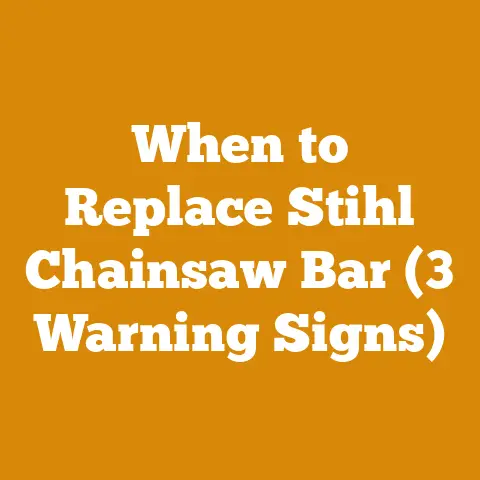Can You Shorten a Stretched Chainsaw Chain (3 Fixes to Try)
I was getting ready for a big day in the woods, fueled by coffee and the enthusiasm of an early morning.
However, as I reached for my trusty chainsaw, I noticed the chain sagging like an old sweatshirt that’s been through one too many cycles in the dryer.
Have you ever been there?
It’s one of those moments when you realize that even the most reliable tools can sometimes let you down.
Chainsaw chains are no exception—they stretch over time due to wear and tear or improper maintenance.
Why Chains Get Stretched
Chains stretching is a common issue for anyone who uses a chainsaw regularly.
Understanding why this happens is crucial to preventing it in the future.
The main culprits are heat, tension, and regular wear and tear.
Heat and Tension
Every time you fire up your chainsaw, the chain whirls around the bar at high speed, generating friction with every cut.
This friction creates heat, causing the metal to expand slightly.
Over time, this repeated expansion leads to noticeable stretching.
Think of it as a pair of jeans that slowly lose their fit with each wear until they’re too loose to stay up without a belt.
Regular Wear and Tear
Chains take a beating with every use.
Whether you’re cutting through softwood or hardwood, each session contributes to gradual wear.
This wear exacerbates stretching issues, leading to a chain that no longer fits snugly on the guide bar.
Fixes to Try
Thankfully, there are several ways to tackle a stretched chainsaw chain.
Let’s dive into three effective methods.
1. Adjust the Tension
Adjusting the tension is usually the first step when dealing with a stretched chain.
It’s like giving your favorite pair of old jeans a new button or two to make them wearable again.
Step-by-Step Guide:
- Turn off the Chainsaw: Always make sure the chainsaw is off and completely cool before attempting any adjustments.
Safety first! - Locate the Tension Screw: This screw is typically found on the side of the chainsaw near the guide bar.
- Loosen the Nuts: Use a wrench to carefully loosen the nuts that secure the guide bar.
- Adjust the Tension Screw: Turn it clockwise to tighten or counterclockwise to loosen the chain.
- Check Tension: Gently pull up on the chain; it should snap back into place on the guide bar without too much slack.
- Tighten Nuts Back: Once you’ve achieved the desired tension, securely tighten the nuts on the guide bar.
Safety Precautions:
- Always wear gloves to protect your hands from sharp edges.
- Ensure your chainsaw is on a stable surface during adjustments.
- Double-check that the chainsaw is off before making any changes.
Pro Tip:
When adjusting tension, aim for just enough slack for smooth movement without allowing sagging.
An overly tight chain can cause excessive wear on both the chain and guide bar.
2. Remove Links from the Chain
If adjusting tension doesn’t solve the issue, removing links may be necessary.
This fix requires a bit more skill and patience but can restore your chain’s snug fit.
Prerequisites:
- Basic understanding of chainsaw mechanics.
- Comfort with using specialized tools.
Required Materials:
- Chain breaker tool
- Rivet spinner tool
- Replacement links (if needed)
Step-by-Step Guide:
- Remove the Chain: Carefully take it off from the guide bar.
- Identify Excess Links: Examine which links need removal based on how much slack exists.
- Break the Chain: Use a chain breaker tool to remove excess links carefully.
- Reconnect: Use a rivet spinner tool to rejoin the chain securely.
- Reinstall and Adjust: Place it back on the guide bar and adjust tension as necessary.
Warnings:
- Removing too many links can make the chain too tight, potentially damaging both chain and guide bar.
- Ensure all tools are in good condition to avoid accidents.
Pro Tip:
Before removing links, measure how much slack exists when pulling up on the chain midway between the guide bar tips.
This helps determine how many links need removal for optimal fit.
3. Replace the Chain
Sometimes replacement is necessary for heavily worn or damaged chains beyond repair—think of it like finally retiring those favorite jeans when patching just won’t cut it anymore!
When to Replace:
- If more than 30% of links show significant wear.
- If there are visible cracks or severe damage anywhere along its length.
- If adjustments fail repeatedly after repeated use over time.






